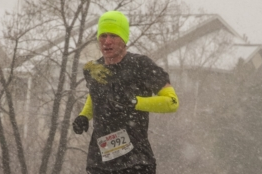At the recent track events I ran, I noticed that more runners than I would have predicted were wearing Nike Vaporflys or other brands’ carbon-plated shoes. These offer much higher energy return than the shoes without plates. The most recent version of the Nikes indicate they can drop up to 3% off your time and that is not inconsequential. When Nike was first promoting them several years ago, it was less common to see them and that has changed.
In the early days of the Vaporflys, many people argued that the shoes were an unfair advantage and constituted mechanical doping. After protracted, heated debate, World Athletics issued a standard on what was allowed with carbon plate usage. I figured their decision was a way to allow continued use (and let the records that had been set with them stand) while establishing ground rules. A lot of people continue to argue that the plates are too much of an advantage, yet the other shoe companies have been manufacturing their own versions, to the extent that in one publication, I saw a “best of” list of carbon-plated shoes from multiple manufacturers.
Now athletes from many, if not all, all brands have options. That’s a big shift from a few years ago though not a surprising one. The shoe companies don’t want their sponsored athletes to fall behind, literally. They also want to offer a faster product that all runners desire.
They’re still expensive: the most recent iteration of the Nikes are $240 and many of the other brands’ versions are over $200. If they can knock 3% off a time, that’s worth it for many athletes. Still, it’s a steep price for most people, even committed runners. They’re not designed to be dedicated training shoes because with the way the carbon plates work, they’re best used in races or in faster workouts. Thus, it’s not just about spending more on your trainers; the shoes need to supplement what you’re already wearing.
Even though some people are still critical of the shoes, public opinion has shifted, or people are at least willing to use them for the purposes of dropping their time, and despite their price, the use of carbon-plated shoes is more prevalent, even among amateur athletes. While I’ve been tempted to snag a pair, I haven’t done it yet. Yes, it would be a huge boost for my time but given the stakes, mostly my ego, I’m not sure they’re worth it. Will they become a necessity to be able to reasonably hang on with similarly talented runners? I suspect that like many technological advances, the companies will figure out ways to produce these shoes at a lower cost and the plates will be a common feature and not a luxury. However, given the way the shoes work, it also seems likely they’ll remain as a racing and speed shoe and in that sense, they may evolve like racing flats–a product that runners who are serious about their race times will seek out but that most runners won’t necessarily choose to wear. We’ll see where it goes with these shoes but we’re certainly in a different spot from a few years ago.


